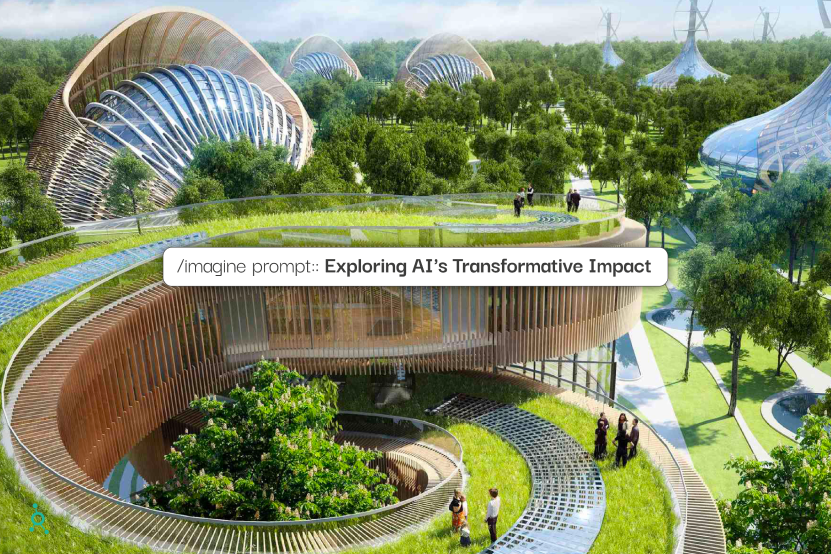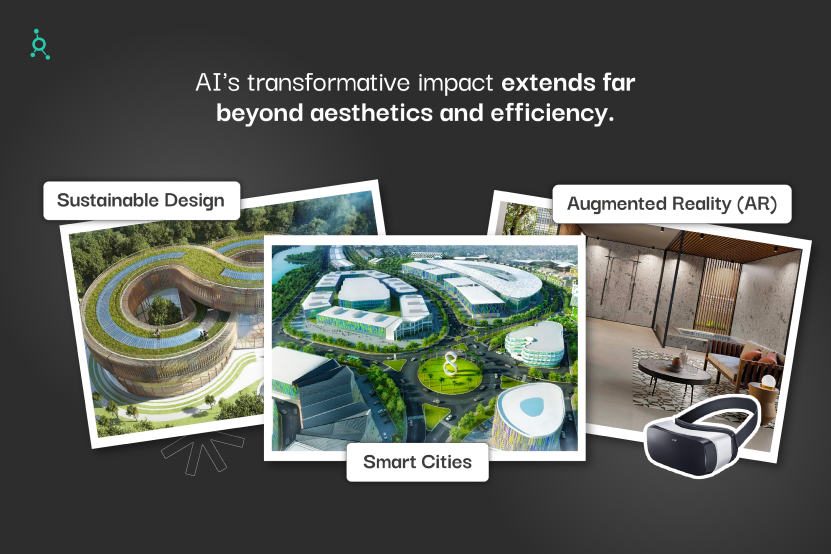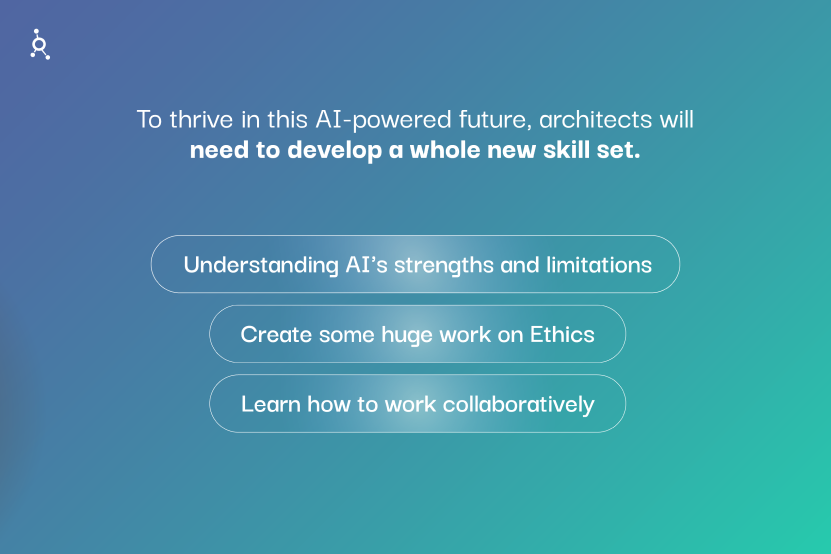The Future of Architecture: Exploring AI’s Transformative Impact

This article delves into the profound impact AI will have on architectural design, exploring its potential to revolutionize every stage of the process, from conceptualization to construction, and pave the way for a future of sustainable, smart, and innovative buildings.
AI as the next evolution in Architectural Design
The towering monuments of history statements of human creation, shaping cities and civilizations for thousands of years. But on the horizon, a new force is arriving to transform architecture once again: Artificial Intelligence (AI).
Gone are the days of architects hunching over drafting tables, conjuring visions from paper and ink. AI ushers in an era of intelligent design, where algorithms become collaborators, assisting architects in:
How can AI improve architectural innovation and efficiency?
AI’s transformative impact extends far beyond aesthetics and efficiency. It will be fundamental in a new era of:

The indispensable role of human creativity in architecture
While AI promises incredible advancements, it’s fundamental to remember that it is a tool, not a replacement for human creativity. The essence of architecture lies in the human ability to imagine, and to impregnate buildings with meaning and emotion. AI can augment and enhance creativity, but it cannot replace the human spark that breathes life into design.
Therefore, the future of architecture lies in a balanced collaboration between humans and AI. Architects will become co-creators with machines, harnessing AI’s power to amplify their design skills while retaining their unique creative vision.
What are the emerging trends in future building design?
Several key trends are shaping the future of architecture:
The synergy of AI and traditional architectural methods
While AI brings revolutionary tools, it will not tear down the fundamental principles of architecture. Traditional methods like sketching, model building, and client interaction will still be integral in the design process. AI will enhance these methods, allowing architects to explore variety, refine their designs, and communicate their vision more effectively.

Frequently Asked Questions (FAQs)
How will AI impact the cost and efficiency of architectural projects?
AI-powered automation can lead to very important cost savings by streamlining the design process and reducing errors. By optimizing materials and resource usage, AI can also collaborate on more efficient construction projects.
What innovations does AI bring to designing energy-efficient buildings?
AI can analyze weather patterns, user behavior, and building performance data to design buildings that optimize energy consumption, reducing reliance on fossil fuels and contributing to a more sustainable future.
How is AI integrating with BIM to transform architectural design?
AI can enrich BIM models with real-world data and predictive simulations, creating a more dynamic and informative platform for design decision-making. This integration fosters collaboration and communication between architects, engineers, and contractors, and this leads to better building outcomes.
How can AI assist in creating more eco-friendly architectural solutions?
For hundreds of years, architects have dreamt of buildings that harmonize with nature, minimizing their environmental footprint while focusing on our well-being. Today, with the rising tide of artificial intelligence (AI), this dream is getting closer to reality. But how exactly can AI assist in creating truly eco-friendly architectural solutions?
AI rocks for ecology
Imagine an AI that crunches through mountains of data on climate, materials, and building performance, then spits out blueprints for structures that integrate with their environment just like that. This isn’t a film; it’s the cutting edge of eco-friendly design. Here’s how AI is changing the game:
Will architecture get replaced by AI?
While AI’s potential for eco-friendly design is undeniable, it is clearly not a magic wand that replaces human architects. The creativity, empathy, and cultural understanding that define great architecture are unquestionable human qualities.
Architects will always be the guiding force for AI, shaping its outputs into meaningful solutions that respond to human needs and cultural contexts. Think of AI as a powerful tool, or a digital compass in the quest for sustainable design, but not the navigator itself.
What skills will architects need to work effectively with AI?
To thrive in this AI-powered future, architects will need to develop a whole new skill set. While technical skills like data analysis and coding will become increasingly valuable, the core skills of architects – strong design thinking, communication, and collaboration – will remain fundamental.
Additionally, architects will need to:

Summing Up
The future of architecture isn’t about humans versus AI; it’s about human-AI collaboration. By embracing AI as a powerful partner, architects can unlock a new era of design possibilities.
Imagine buildings that not only minimize their environmental footprint but actively contribute to environmental restoration, enhancing the well-being of both people and the planet.
This is the future that awaits, a future where architecture becomes a powerful force for good, fueled by the combined strength of human creativity and AI’s boundless intelligence.
By utilizing AI ethically and responsibly, architects can transform the built environment into a paradise of sustainability, leaving a legacy for generations to come.
So, the next time you look at a building, remember that it might not just be bricks and mortar; it could be a statement of the extraordinary possibilities that arise when human minds meet the transformative power of AI.
BetterPros and the Future of Remote Work in Architecture
BetterPros is a leading architectural outsourcing agency that helps architects find and hire remote talent. BetterPros has a talent pool of experienced architects who can help you with all aspects of your architectural project, from concept design to construction documentation.
BetterPros offers many benefits to architects who choose to work with us, including:
If you are looking for a reliable and experienced architectural outsourcing partner, BetterPros is the perfect choice for you. With BetterPros, you can be confident that your architectural project will be delivered on time and within budget. BetterPros has a proven track record of success, and we are committed to providing our clients with the highest quality of service.
In addition to the benefits listed above, BetterPros also offers some other features that make us a great choice for architecture studios who are looking to work with remote talent. For example, BetterPros utilizes state-of-the-art communication platforms that allow studios to collaborate with their remote team members in real-time. This platform also makes it easy to manage projects and track progress.
Another great feature of BetterPros is our team of dedicated Core Coaches or account managers. These account managers are available to help studios with everything from finding the right remote talent to managing their projects. They can also provide guidance and support throughout the entire architectural process.
If you are looking for a reliable and experienced architectural outsourcing partner, BetterPros is the perfect choice for you. With BetterPros, you can be confident that your architectural project will be delivered on time and within budget, and that it will meet your highest standards of quality.
